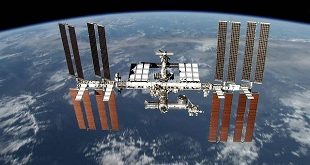
What then if Big bang wasn’t the beginning, after all?
| Ethan Siegel | The Universe began not with a whimper, but with a bang! At least, that’s what you’re commonly told: the Universe and everything in it came into existence at the moment of the Big Bang. Space, time, and all the matter and energy within began from a singular point, and then expanded and cooled, giving rise over billions of years to the atoms, stars, galaxies, and clusters of galaxies spread out across the billions of light years that make up our observable Universe. It’s a compelling, beautiful picture that explains so much of what we see, from the present large-scale structure of the Universe’s two trillion galaxies to the leftover glow of radiation permeating all of existence. Unfortunately, it’s also wrong, and scientists have known this for almost 40 years.
The idea of the Big Bang first came about back in the 1920s and 1930s. When we looked out at distant galaxies, we discovered something peculiar: the farther away from us they were, the faster they appeared to be receding from us. According to the predictions of Einstein’s General Relativity, a static Universe would be gravitationally unstable; everything needed to either be moving away from one another or collapsing towards one another if the fabric of space obeyed his laws. The observation of this apparent recession taught us that the Universe was expanding today, and if things are getting farther apart as time goes on, it means they were closer together in the distant past.
An expanding Universe doesn’t just mean that things get farther apart as time goes on, it also means that the light existing in the Universe stretches in wavelength as we travel forward in time. Since wavelength determines energy (shorter is more energetic), that means the Universe cools as we age, and hence things were hotter in the past. Extrapolate this back far enough, and you’ll come to a time where everything was so hot that not even neutral atoms could form. If this picture were correct, we should see a leftover glow of radiation today, in all directions, that had cooled to just a few degrees above absolute zero. The discovery of this Cosmic Microwave Background in 1964 by Arno Penzias and Bob Wilson was a breathtaking confirmation of the Big Bang.
It’s tempting, therefore, to keep extrapolating backwards in time, to when the Universe was even hotter, denser, and more compact. If you continue to go back, you’ll find:
- A time where it was too hot to form atomic nuclei, where the radiation was so hot that any bound protons-and-neutrons would be blasted apart.
- A time where matter and antimatter pairs could spontaneously form, as the Universe is so energetic that pairs of particles/antiparticles can spontaneously be created.
- A time where individual protons and neutrons break down into a quark-gluon plasma, as the temperatures and densities are so high that the Universe becomes denser than the inside of an atomic nucleus.
- And finally, a time where the density and temperature rise to infinite values, as all the matter and energy in the Universe are contained within a single point: a singularity.
 The Independent Uganda: You get the Truth we Pay the Price
The Independent Uganda: You get the Truth we Pay the Price


